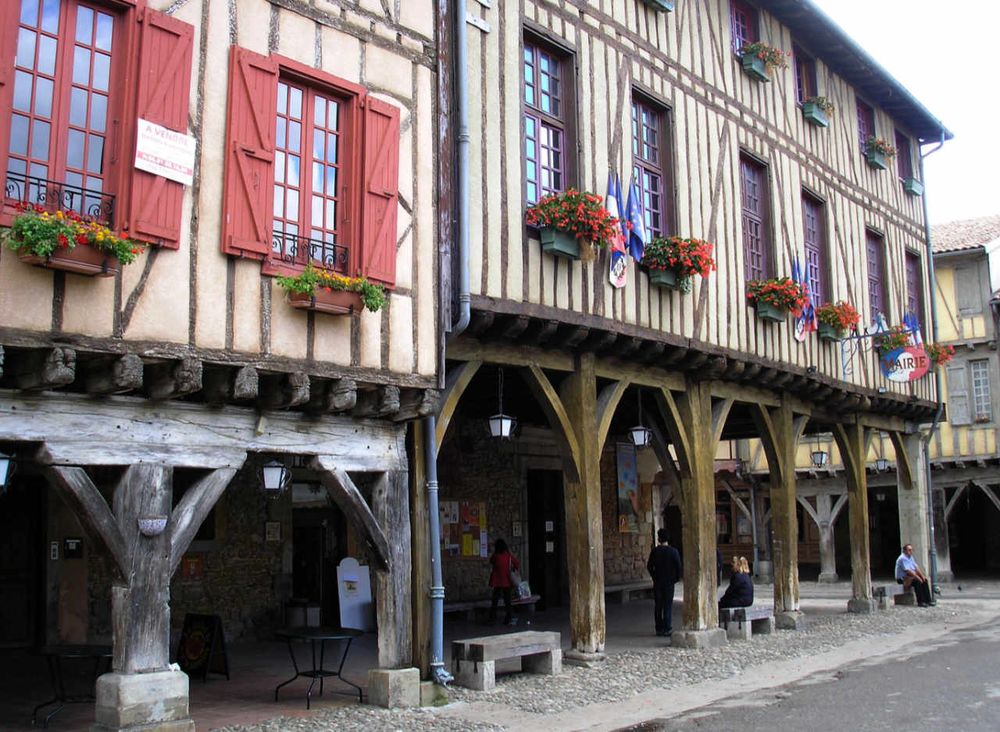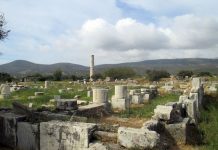Mirepoix, a small town of 3100 permanent inhabitants, is situated halfway between Carcassonne and Foix.
It’s name is cited for the first time in the 10th century in a charter granted to the inhabitants by the count of Foix Raymond Roger and is thought to have celtic origins.
During the crusade against the Albigensians (Cathares) in 1209, Simon de Montfort took the feudal château and the family, who had strong links to catharism, was dispossesed. Simon de Montfort gave it to his loyal lieutenant Guy de Levis who became Marchécal de Mirepoix.
During this era the town extended from the foot of the château on the right bank of the Hers and was flourishing, with nearly 2000 inhabitants and many shops and industries.
In 1279, the barrage at Puivert ruptured and caused massive flooding that destroyed the whole village, sparing only the château.
In 1289, Guy de Lévis decided to rebuild the town on the left banki of the Hers and it was his son who executed the project. The town was reconstructed in the form of a bastide, with a large central square and streets following two perpedicular axes.
The city prospered and in 1317 Pope John XXII made it a bishopric.
In 1362, the town was attacked by a band of highway robbers who set it alight. After this great fire which destroyed the southern part of the town, the centre was refortified with a strong encircling wall and four large gates to protect it. Today, all that remains of this fortification is the Porte d’Aval.
On the large central square you can still admire the half-timbered houses supported on wood pillars, creating a magnificent covered arcade. The ends of the joists of the richest houses are sculpted, and the most beautiful sculptures are on the house of the Justice du Seigneur, which became in 1500 the Maison des Consuls, showing women’s faces, bearded heads, a tortoise and other fantastical images.
The little church of St Maurice built in 1298 by Jean de Lévis and his wife Constance de Foix was transformed over time into a cathedral. Today the cathedral of St Maurice has a single nave 48 m long, 24 m high, 22 m wide, a gothic gate and an elegant 60 m high pointed belltower. Of the cathedrals of Europe only that of Gerona in Spain has a wider nave. Inside, vandalism and demolitions destroyed many treasures but you can still admire a tabernacle, a Christ on the cross from the 14th century and seven paintings by Larivière-Vesontius.
The Dordogne phenomenon has begun to appear in Mirepoix: English estate agencies, menus in English, British newspapers and magazines in the newsagents, etc. This charming, peaceful little town is much appreciated by the English, undoubtedly because of its mild southern climate and proximity to the airport at Carcassonne.
Near Mirepoix you’ll also want to visit:
–the church at Vals
–the Château de Lagarde,built in the 14th century by the heirs of Guy de Lévis. At the apogee of its splendour it was nicknamed the Le petit Versailles du Languedoc. Its magestic ruins hint at its glorious past.
–Camon,a small fortified village constructed around a Benedectine abbey that was founded by Charlemagne in 778.









